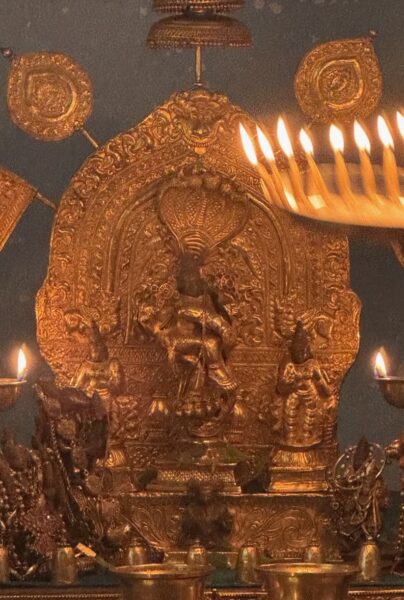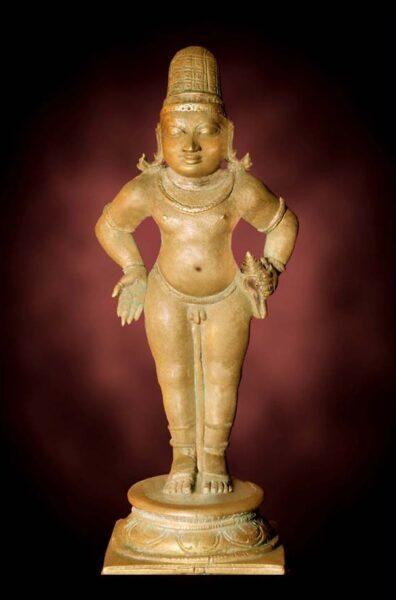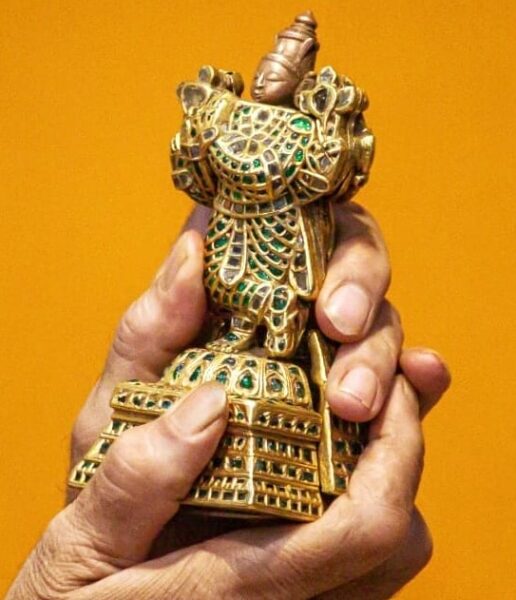हरि सर्वोत्तम । वायु जीवोत्तम | श्री गुरुभ्यो नमः
On the occasion of Narasimha Jayanti, as our nation bravely and justly takes on the धर्म-युद्ध against terrorism, here is a powerful Pada by none other than Shri Vaadiraajaru urging us to take on the evil enemy boldly, destroy them and bring peace and prosperity to good people.
JAI NARASIMHA! JAI HIND!

कॊल्लुबेग कळ्ळर सिरिनल्ल मध्ववल्लभ .. प ..
O beloved Lord of Acharya Madhva (मध्व वल्लभ) and Master of Shri Devi (सिरिनल्ल), quickly kill (कॊल्लु बेग) the thieves (कळ्ळर).
- The adjective बेग is used by Raajaru to emphasize the need for God-speed to mete out justice quickly without delay or doubt. This is a reference to Lord Narasimha who readily responds to His devotee’s urgent needs against evil, as in the case of child Prahlada.
- Raajaru’s reference to मध्व-वल्लभ is also reminiscent of Lord Janardana, destroyer of evil and protector of righteousness. This form of the Lord is the object of संकल्प and समर्पणॆ during Pitru-kaarya. This indicates that in killing the terrorist enemy we act as instruments to send them unto the hands of Lord Almighty for final justice.
कॊल्लदिद्दरॆ निल्लरवरु कलियुगद कळ्ळरु .. अ प ..
If you don’t kill them (कॊल्लदिद्दरॆ) they will not stop (निल्लरवरु), these thieves (कळ्ळरु) of the evil era of Kali (कलियुगद).
- Like weeds and infections, evil only grows if not taken care of – which is why it must be destroyed quickly and completely.
ऎल्लकूडि निन्न पूजॆगॆ कल्लु हाकुत्तिद्दरु
बल्लॆनवर कॊळ्ळॆकारर हल्ल कीळदॆ निल्लरु .. च १ ..
They all gather (ऎल्लकूडि) throwing stones and disrupting (कल्लु हाकुत्तिद्दरु) your worship (निन्न पूजॆगॆ). I know them (बल्लॆनवर) – without removing the fangs (हल्ल कीळदॆ) of these deceitful dacoits (कॊळ्ळॆकारर) they will not stop (निल्लरु).
- Lord’s Pooja is a metaphor that includes all Dhaarmic and constructive activities. As Acharya Madhva says in His Gita-taatparya “स्वविहितवृत्त्या भक्त्या भगवदाराधनमेव परमो धर्मः, i.e. Engaging in one’s prescribed duties with devotion as the worship of the Supreme Lord – this alone is the highest Dharma.” Evil terrorists cannot bear to see this and so will try to disrupt.
- Raajaru assures us that He knows such evil and the only way to address it is to remove their capability to bite, i.e. destroy the breeding grounds and infrastructure of terrorists.
ऒळ्ळॆ मातनाडलवरु कोलाहलदि बैवरु
गॆलुव शक्ति इल्ल नमगॆ बल्लॆ मध्वरिगॊलिदनॆ .. च २ ..
They don’t speak good words (ऒळ्ळॆ मातनाडलवरु). They criticize and scold (बैवरु) and create chaos (कोलाहलदि). We know (बल्लॆ) we (नमगॆ) lack the strength to win (गॆलुव शक्ति इल्ल) without following the path of Acharya Madhva (मध्वरिगॊलिदनॆ).
- Raajaru warns us of the behavior of evil people and guides us to bravely trod the the path of Dharma paved by Vaayu Deva to get strength – as He showed in His three avataara-s as Hanuma, Bhima and Madhva.
- Hanumanta single-handedly performed reconnaissance on Lanka, made first contact with Seeta Devi, and hit Ashokavana as part of a surgical strike. In the following battle, Vaayuputra decimated a third of Ravana’s imposing army and killed his youngest son Akshayakumar, a ferocious warrior equal to Indrajit and Ravana himself in battle.
- Bhimasena, the true hero of Mahabharata, single-handedly destroyed powerful and evil demons such as Bakasura, Hidimba, Keechaka, Jarasandha. And in the Kurukshetra war, Vaayuputra destroyed majority of their massive army of 11 Akshauhinis and also killed all the Kauravas.Hanuma single-handedly performed reconnaisance, a surgical strike decimated a third of Ravana’s imposing army and killed Akshaya
- This is also a reference to the 2nd stanza of Shri Hari Vayu Stuti “उत्कण्ठाकुण्ठा कोलाहल जवविदिताजस्र …” praising Vaayu Devaru that even the golden dust from his feet adorns the crowns of other Devata-s who excitedly and zealously bow down to him.



कळ्ळतनव नोल्लेवेंबरु मुळ्ळु मॊनॆयंतिप्परु
चॆलुव हयवदन अवर कॊल्लु नम्म गॆलिसु .. च ३ ..
These people deny (नोल्लेवेंबरु) being thieves (कळ्ळतनव) but they are deceitful like sharp thorns on bushes (मुळ्ळु मॊनॆयंतिप्परु). O beloved (चॆलुव) Horse-faced Lord (हयवदन), kill them (अवर कॊल्लु) and make us victorious (नम्म गॆलिसु).
- Raajaru describes the hypocrisy of enemy, who claim to be sincere and transparent, but if you let them close to touch they are like sharp and poisonous thorns.
- The ending appeal is to all-knowing Lord Hayagriva and is simple and direct – help us protect the good and destroy the evil.
/Raghunath Rao/ “Do your Best … and leave the Rest … “
(All mistakes mine – all credit to Gurus and Acharyas )
|| sarvaṁ śrī kṛṣṇārpanamastu ||





